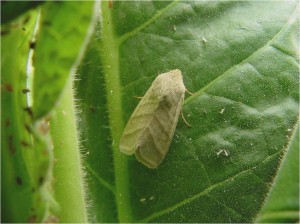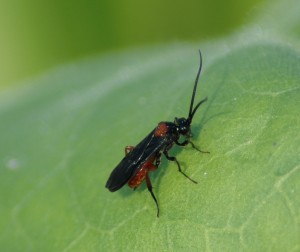Insects – Tobacco Budworms
go.ncsu.edu/readext?66322
en Español / em Português
El inglés es el idioma de control de esta página. En la medida en que haya algún conflicto entre la traducción al inglés y la traducción, el inglés prevalece.
Al hacer clic en el enlace de traducción se activa un servicio de traducción gratuito para convertir la página al español. Al igual que con cualquier traducción por Internet, la conversión no es sensible al contexto y puede que no traduzca el texto en su significado original. NC State Extension no garantiza la exactitud del texto traducido. Por favor, tenga en cuenta que algunas aplicaciones y/o servicios pueden no funcionar como se espera cuando se traducen.
Português
Inglês é o idioma de controle desta página. Na medida que haja algum conflito entre o texto original em Inglês e a tradução, o Inglês prevalece.
Ao clicar no link de tradução, um serviço gratuito de tradução será ativado para converter a página para o Português. Como em qualquer tradução pela internet, a conversão não é sensivel ao contexto e pode não ocorrer a tradução para o significado orginal. O serviço de Extensão da Carolina do Norte (NC State Extension) não garante a exatidão do texto traduzido. Por favor, observe que algumas funções ou serviços podem não funcionar como esperado após a tradução.
English
English is the controlling language of this page. To the extent there is any conflict between the English text and the translation, English controls.
Clicking on the translation link activates a free translation service to convert the page to Spanish. As with any Internet translation, the conversion is not context-sensitive and may not translate the text to its original meaning. NC State Extension does not guarantee the accuracy of the translated text. Please note that some applications and/or services may not function as expected when translated.
Collapse ▲Biology
Tobacco budworm (Heliothis virescens) larvae feed on tobacco foliage in the bud preflowering and on flowers pretopping.
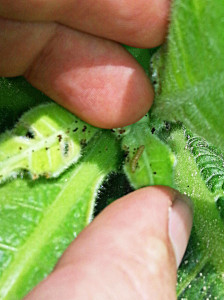
Notice the small, black specks of caterpillar ‘frass’ (droppings) as a sign of recent feeding by this young budworm at Kinston, NC. Photo: Demetri Tsiolkas
Corn earworm larvae (Helicoverpa zea) may also be present in tobacco, and these 2 species are difficult to distinguish between as larvae without magnification. See the below video for a guide to differentiate between these species.
Tobacco budworm feeding results in holes in foliage (Type 1 Damage) and can destroy flowers and seed capsules, in seed production. In some cases, tobacco budworm feeding can result in destruction of the apical growth point, prematurely topping the plant (Type 2 Damage). Type 1 Damage is the most common type of tobacco budworm damage, and this type of feeding does not typically results in measurable yield loss. This is because budworm injury occurs prior to topping, while plants are still growing. The plant can compensate for the weight loss to tobacco budworm feeding. Type 2 Damage is of greater economic concern, because it potentially increases labor costs for sucker control. Type 2 Damage, however, is much rarer than Type 1 Damage. Research is ongoing to determine if there are factors that favor Type 2 Damage and to revise treatment thresholds to take this type of damage into account.
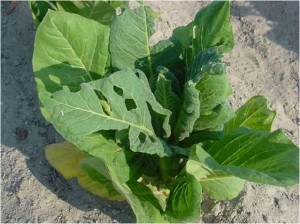
Type 1 budworm damage is simple leaf and bud feeding.
Photo: C. Sorenson
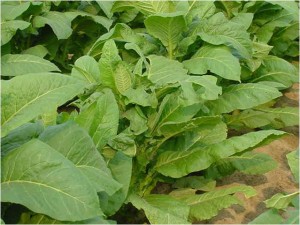
Type 2 budworm damage causes premature suckering. Photo: C. Sorenson
Tobacco budworm adults emerge in late spring, and larvae do not begin to appear in tobacco until roughly 4 weeks after transplant. There are typically 4 generations per year in North Carolina. Larvae progress through 5 to 6 instars, and development takes between 21 to 25 days. Tobacco budworms overwinter as pupae in the soil. Cotton and soybeans also serve as hosts for tobacco budworm larvae. Corn earworms have a broader crop host range.
Thresholds and Management
Before the crop flowers, treat when 10 percent or more of plants checked are infested with budworms. See information on how to scout for tobacco budworm larvae. Do not count plants that have damage but no live worms. Budworms will not usually cause significant loss after buttoning and should not be counted after that time. If budworm populations are at or near threshold but plants will be topped within 2 weeks, treatment is not recommended because limited damage will occur before topping and after topping, budworm are no longer a pest. Timely topping will reduce budworm populations and damage.
This threshold is extremely conservative; based on much recent research, tobacco budworms must generally reach much higher populations to cause economic loss under the growing conditions found in most of North Carolina.
See the North Carolina Agricultural Chemicals Manual for registered materials, rates, and applications recommendations.
Biological Control
The parasitic wasp Campoletis sonorensis (Cameron) (Ichneumonidae) kills small budworms while another parasitic wasp Cardiochiles nigriceps Viereck (Braconidae) kills large budworms near pupation. Predators include several Polistes spp. paper wasps which will kill larvae to feed to their larvae.
More information
Scouting for tobacco budworms – Tobacco Growers Information Portal



